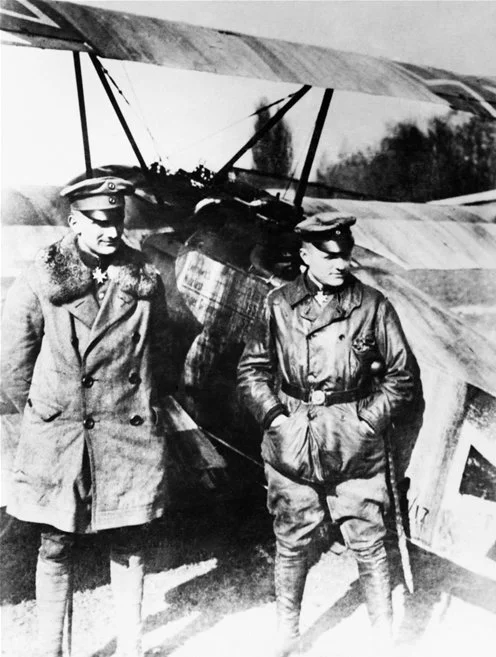The Red Baron: The Sky’s Most Famous Ace
When you think of World War One aviation, one name always rises above the clouds — Manfred von Richthofen, better known as The Red Baron. A name that has become legend, synonymous with courage, precision, and the deadly new age of aerial warfare.
Born into a noble Prussian family in 1892, Manfred von Richthofen originally served in the cavalry. But as the Great War changed from sweeping movements to trench stalemates, he found himself longing for action. In 1915, he transferred to the Imperial German Air Service — a decision that would define both his life and his legend.
Flying quickly became Richthofen’s passion. He was a meticulous pilot, not the most daring or acrobatic, but incredibly skilled and disciplined. He rose through the ranks and soon commanded his own squadron, Jasta 11. To make himself easily recognizable to friend and foe alike, he painted his aircraft a striking red.
The bright crimson Albatros D.III — and later, the famous Fokker Dr.I triplane — made him instantly iconic. The Allied airmen began to fear the “Red Baron,” a figure who seemed almost mythical against the grey skies of the Western Front.
Richthofen’s squadron became known as the Flying Circus due to their brightly painted planes and the way they moved from airfield to airfield. Under his command, German air tactics became far more organized and lethal. He trained his men to fly in formation, to attack from advantageous positions, and to avoid unnecessary risks — strategies that gave them the edge.
By 1918, the Red Baron had been credited with 80 confirmed aerial victories, making him the top-scoring ace of the war. Yet despite his fame, he remained a soldier bound by duty, often writing about the burden of killing and the fleeting nature of life above the trenches.
On April 21, 1918, near the Somme River, Richthofen pursued a Canadian pilot, Wilfrid May, too far over Allied lines. Caught low and exposed, he was fired upon — possibly by Australian ground troops or Canadian pilot Arthur Roy Brown. The Red Baron’s plane crash-landed, and he died moments later. He was just 25 years old.
Even his enemies buried him with full military honors, a testament to the respect he commanded.
More than a century later, the Red Baron remains a symbol of early air combat — the chivalry, the danger, and the dawn of a new kind of warfare. His story reminds us that even amid industrialized war, there were still individuals whose courage and skill defined an era.


